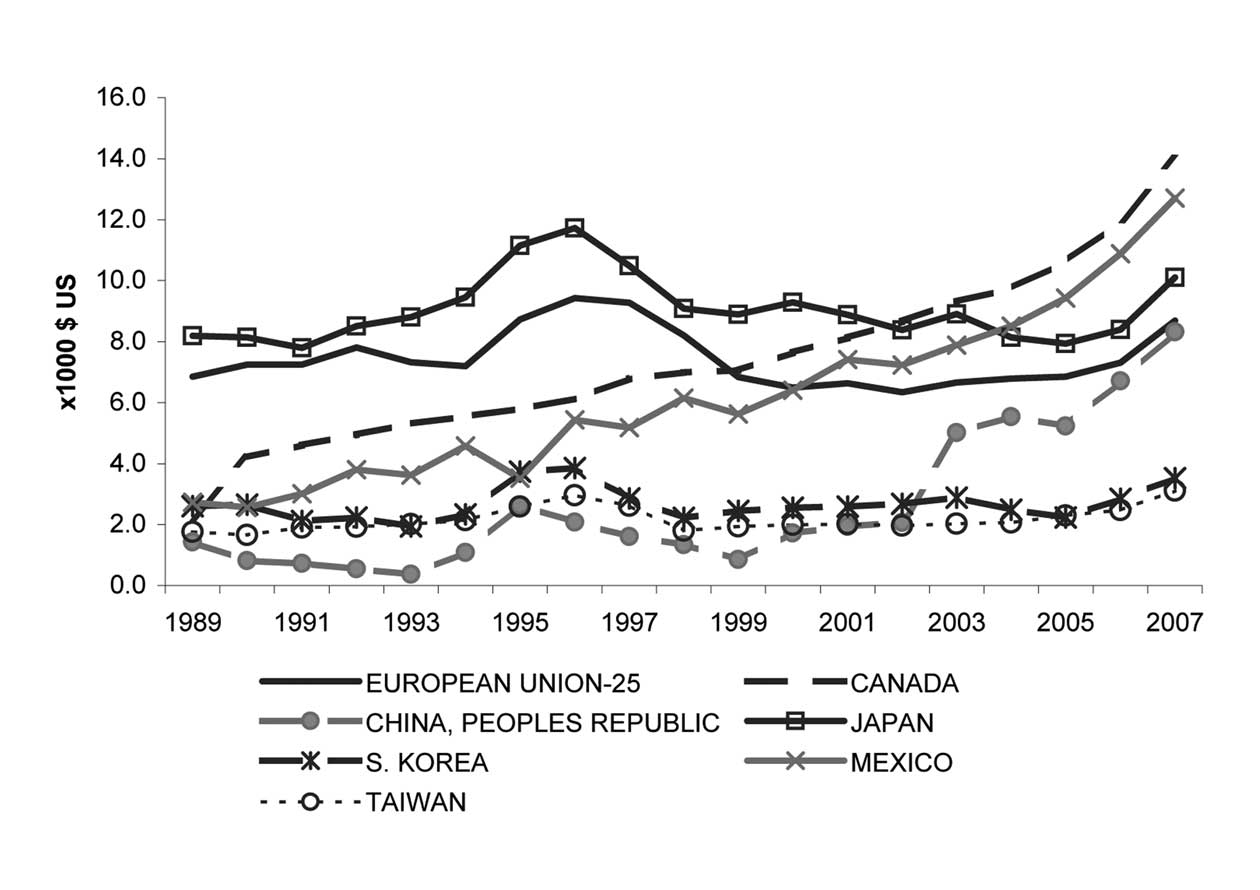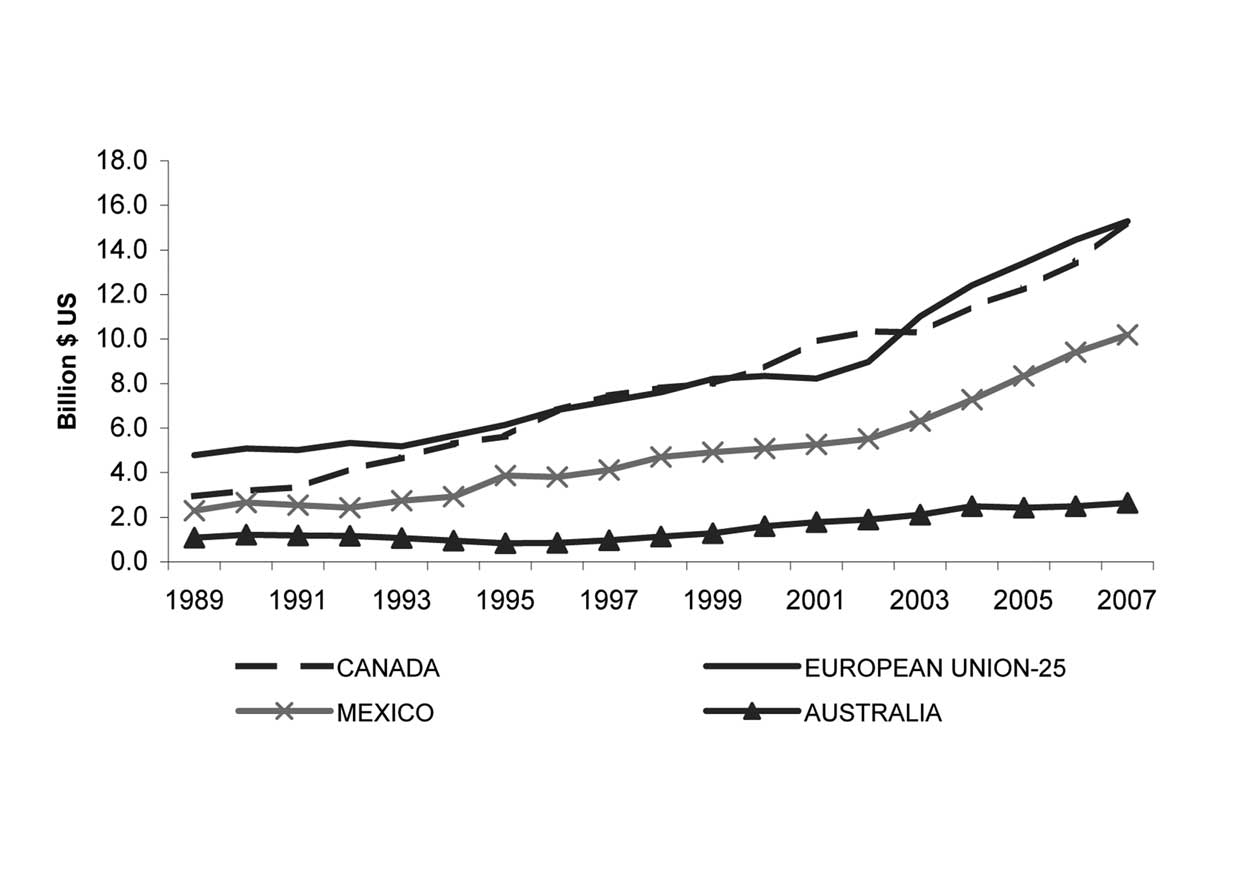Figure 3-16. US Exports Destinations from 1989-2007. Source: USDA, 2008
ers and caterers. Production and transport is often organized by developed country suppliers who oversee production, handling and transport through to their final customers.
European livestock production and trade
For the past 30 years Europe has been producing far more meat and dairy products than it needs, becoming one of the world's leading exporters. Previously, the search for increased market share led to dumping of these products in less wealthy countries with consequent damage to the economic status of their agricultural producers. There are several well documented cases of disruption of and damage to, developing country agricultural markets as a result of this European strategy. As a result of rigorous CAP reforms in the 1990s, European production of beef and |
|
veal has fallen rapidly from around 50% overproduction (EU-15) in the 1990s to around 96% self-sufficiency in 2004 (Table 3-13).
The large increases in European livestock production between 1960 and 1990 relied heavily on animal feed imported from Brazil, Argentina, North America and Ukraine. In 2005 the EU 25 imported 30 million tonnes of animal feed, over half coming from Brazil and Argentina (data from Eurostat). Animal feed is the largest imported (aggregated) product for the EU-25 (European Commission, 2006b).
Pig meat is still being overproduced in EU-25 by about 8%, making Europe a net exporter of pig meat products, mainly to Russia and Japan. The EU is a net importer of sheep meat (EU-25 is only 78% self-sufficient in sheep and goat meat) and dairy products, mostly from New Zealand |
Figure 3-17. US Imports of Agricultural Products 1989-2007. Source: USDA, 2008


